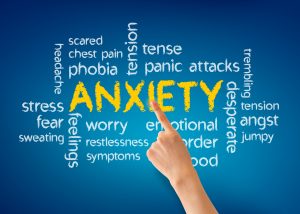Dominick L. Flarey, Ph.D, RN-BC, ANP-BC
Board Certified Adult Nurse Practitioner
Board Certified Psychiatric-Mental Health Nurse
The benefits of meditation and yoga are vast and varied. They can help to improve mental and physical well-being, increase focus and concentration, reduce stress and anxiety, improve sleep quality, and boost immunity. Additionally, meditation and yoga can help to increase self-awareness, foster a greater sense of self-compassion and acceptance, and promote more positive thinking patterns.
There are many similarities between meditation and yoga, which is why they are often practiced together. Both involve the use of breath control, focus, and mindfulness. In both practices, the goal is to quiet the mind and achieve a state of relaxation. Additionally, both meditation and yoga can be used as tools for self-improvement and personal growth.
In this article, Yoga and meditation: What are the real health benefits? author Kat Bayly presents us with some interesting information on both modalities and outlines the benefits of both practices. She also shows how both practices can be combined and often are to enhance the experiences. This interesting read will enhance your understanding of using both modalities as complimentary practices to one another to gain better health outcomes in your meditation and yoga practices.
“While meditation primarily works on your mind and thought patterns, yoga moves your body and can help improve your fitness. This isn’t to say that yoga doesn’t work with your mind and improve your mental health. Research has found that yoga can have a positive effect on your mental health too and meditation can also benefit you physically.”

Yoga and meditation: what are the real health benefits? Bayly, Kat. LiveScience. October 8, 2022. Access article here
Commentary
Benefits of Meditation
There are many health benefits associated with meditation. Some of these benefits include reducing stress, improving cardiovascular health, and reducing pain. Meditation has also been shown to improve cognitive function and increase brain activity. Meditation has been shown to provide a number of benefits for the body. These benefits include reducing stress, improving sleep quality, and reducing pain perception. Meditation has also been shown to improve cardiovascular health by reducing blood pressure and improving heart rate variability. Additionally, meditation has been shown to boost the immune system and improve cognitive function.
Meditation has been shown to be beneficial for the mind in a number of ways. First, it can help to reduce stress and anxiety levels. This is because meditation helps to promote a state of relaxation and calmness. In addition, meditation can also help to improve concentration and focus. This is due to the fact that it helps to quiet the mind and allows one to focus on a single thought or object. Finally, meditation has also been shown to help improve sleep quality.
Meditation has been shown to be beneficial for spiritual well-being. In a study of over 3,500 adults, researchers found that those who meditated had higher levels of self-actualization and self-transcendence than those who did not meditate. Meditation has also been found to increase feelings of connectedness and positivity, and to decrease anxiety and depression. In addition to the benefits mentioned above, meditation can also help to improve focus, concentration, and memory.
Benefits of Yoga
The benefits of yoga on the body are numerous. From improving flexibility and joint range of motion to reducing stress levels, there is something for everyone. One of the most beneficial aspects of yoga is its ability to improve posture and alleviate pain. By lengthening and stretching the muscles, yoga can help to realign the spine and reduce tension in the shoulders and neck. In addition, the deep breathing associated with yoga helps to oxygenate the blood and promote healing.
The benefits of yoga on the mind are numerous and well-documented. Yoga can help to improve mental clarity and focus, while also reducing stress and anxiety levels. Additionally, yoga has been shown to improve sleep quality and promote a sense of well-being. There is also evidence to suggest that yoga can help to reduce symptoms of depression.
The benefits of yoga on the spiritual are many and varied. For some, yoga provides a way to connect with their higher power or to develop a deeper understanding of their own spirituality. For others, yoga may be a way to reduce stress, anxiety, and negative emotions. Additionally, yoga can help to improve focus and concentration, and promote a sense of peace and well being. Ultimately, the benefits of yoga on the spiritual are unique to each individual and will depend on their own personal journey. Many have claimed profound spiritual experiences during yoga sessions.
Types of Meditation and Yoga
There are many different types of meditation, but some of the most common include mindfulness meditation, Transcendental Meditation, and Zen meditation. Mindfulness meditation is a type of meditation that involves focusing on your breath and being aware of your thoughts and sensations without judgement. Transcendental Meditation is a type of meditation that involves repeating a mantra or sound to help you focus and reach a state of deep relaxation. Zen meditation is a type of meditation that involves sitting in silence and focusing on your breath.
There are many different types of yoga, but some of the most common are Hatha, Vinyasa, and Ashtanga yoga. Hatha yoga is a more gentle form of yoga, while Vinyasa and Ashtanga yoga are more physically challenging.
In conclusion, both meditation and yoga have benefits and can be practiced by anyone. Meditation can help to clear the mind and focus on the present, while yoga can help to improve flexibility and strength. They are both beneficial in their own ways and can be enjoyed by all.
Meditation Education
Are you a health care professional, or an ordained or licensed clergy who is interested in teaching meditation to others? If so, please review the Meditation Instructor Education and Certification program offered by the American Institute of Health Care Professionals, Inc. The program is by distance education in online classroom with faculty mentoring as needed. There is open enrollment and you may begin your program at any time. Our CE courses have board approvals. To begin, you may preview our program by accessing here.
Additional Resources
1. Meditation for CMT is a No Brainer. Lugo, Estela. Hereditary Neuropathy Foundation. September 22, 2020. Access here.
2. 12 science-Based Benefits of Meditation. Thorpe, Matthew, et.al. Healthline. October 27, 2020. Access here.
3. A Systemic Review of Yoga Interventions for Helping Health Professionals and Students. Ciezar-Andersen, Sylwia, et.al. Complimentary Therapies in Medicine. Vol. 58; May 2021. Access here.
4. Yoga an effective strategy for self-management of stress-related problems and wellbeing during COVID19 lockdown: A cross-sectional study. Sahni, Pooja, et.al. PLOS ONE. February 10, 2021. Access here










